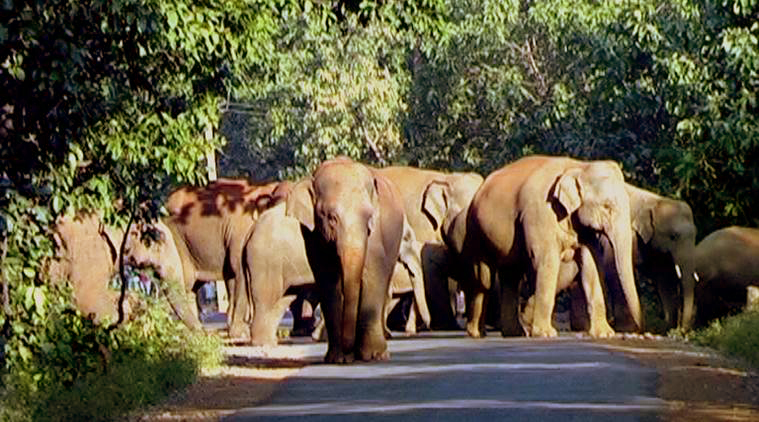Sambalpur: A number of factors like loss of habitat mainly contributed by deforestation, poaching, man-animal conflicts, mishaps due to electrocution and railway lines have led to sharp fall in elephant population in Sambalpur. In the last ten years, 154 elephants have died in the district, a report said.
The number of jumbos has been dwindling while environmentalists blame the Forest department for its failure to protect the animals. In many cases, the department allegedly suppresses the real causes of the casualties to ward off the heat. In some cases, deaths are attributed to diseases or natural deaths, sources said.
As ivory has a huge demand, poachers keep the animals on their target. According to official sources, the district has recorded deaths of 154 elephants in six ranges. In reality, the number of casualties is much higher, sources added.
Environmentalists expressed concern over some cases of poaching. They observed that poachers went deep inside forests and hunted elephants for tusks. Then, they bury their carcasses in an effort to hide the evidence. Wildlife Weeks are observed every year while crores of rupees are spent under various schemes for protection of animals and their habitats. Despite all this, the population of elephants is not increasing in the district. This has been a major cause of concern.
According to an official report, 27 elephants died between 2001 and 2020 in Sambalpur, Rengali, Padiabahal and Dhama ranges. Of them, 12 were killed by poachers by laying live electric wires. Two died in train accident, four shot down and nine others died of sun stroke and other reasons.
In the same period, 30 elephants died in Bamara division. Six got electrocuted, three shot down by poachers while 21 died of sun strokes, diseases and other reasons. Bargarh division has recorded 11 elephant deaths while seven got electrocuted, one shot dead and three died of diseases.
Jharsuguda division reported 17 deaths while six of them were due to electrocution, four due to train collision and seven for other reasons.
In Rairakhol division, 20 elephant casualties were recorded in the same period. Three got electrocuted, two shot dead by poachers and four died due to unknown reasons. Around 11 died due to diseases. In Hirakud division, one elephant has died.
On the other hand, their census report is not encouraging. In 2010, there were 249 elephants in six forest divisions, but their number continued to decline. In 2012, the number came down to 229.
As per the 2015 Census, their number sharply came down to 137. However, the numbers increased to 192 in 2017.
It was said that 45 elephants were counted additionally in 2015 and 2017 Censuses. Due to Covid restrictions, Census has been stalled in 2020. However, the office of the RCCF claimed that the number of elephants has increased.
It was found that apart from poaching, train mishaps are another big factor for jumbo deaths.
There are also reasons emanating from a failure of agreement between the Forest department and the Railways that eventually led to mishaps. Forest officials admit that caution had not been issued for the stretch where a train hit the tusker on the track on 33-km Jujumara-Haribari stretch under Sadar forest range.
In absence of an underpass or overpass on Jujumara-Hatibari stretch, there are possibilities of casualties on the stretch.
PNN
